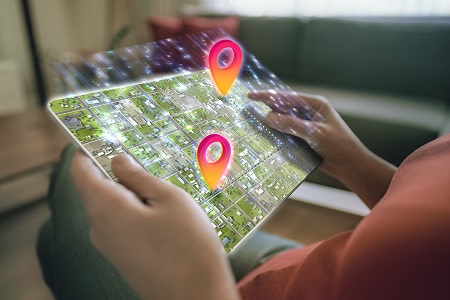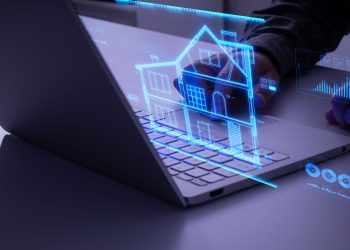Two decades ago, did you imagine a time when virtually everyone regularly interacted with a smartphone? Today, it doesn’t matter whether you’re young or old, at work or play. Smartphones are ubiquitous, and they’re only one example of how quickly and pervasively technology impacts our lives.
As the REBAC team gears up for our annual technology issue of Today’s Buyer’s Rep, we’ve been peering into the future, trying to imagine the impact of technology 20 years from now. It’s a future that will likely include driverless cars, significant advances in artificial intelligence, and much more.
One of the most fascinating developments is a wide variety of “reality-based” technologies.
Virtual reality aims to be completely immersive, visually transporting users to other places, real or imagined, allowing them to interact with a simulated environment.
Currently, the most advanced products require wearing goggles that eliminate any visual awareness of your actual surroundings. When worn in a specially equipped room, sensors detect your steps and eye movements, modifying the virtual environment accordingly.
The real estate industry was a fast adopter of early virtual reality (VR) technology, with so-called virtual tours playing an important role in property marketing. What has changed dramatically is the quality of the tour experience.
Commercial and luxury real estate agents are already dabbling in cutting-edge VR options, using fully-immersive technology to market new projects to investors or to help sell high-end properties to international buyers who prefer a virtual tour over a personal visit.
Recent advancements have also produced mainstream options. For example, Samsung’s Gear 360 camera has two 180-degree wide-angle lenses, making it easy and economical to record high-quality 360-degree video images. A new 2017 version of the Gear 360 adds live-streaming features and compatibility with other smartphones (beyond Samsung).
Augmented reality offers a much less immersive experience, bringing various virtual elements into a real environment. For example, consider the instant success of Pokémon GO, a location-based augmented reality game. Players use a mobile device to locate virtual creatures, which can only be viewed on the user’s screen, but appear to exist in the real world.
Even though VR is receiving more attention, augmented reality (AR) is likely to play a bigger role over the long term. By mixing real and virtual elements, the number and types of AR applications are unlimited, potentially impacting every aspect of life at home and work.
In real estate, AR is already being used to help homebuyers select among builders’ (three dimensional) floor plans, as well as floor finishes, countertops, etc. Buyers of existing homes (and current homeowners) also use AR apps to envision a new paint color on their walls, or how to arrange their furniture.
On the cutting edge, developers are working on new mixed reality goggles at Microsoft (HoloLens) and Magic Leap, which will be so effective in blending virtual elements (holographic images) into the physical world that it will become difficult to distinguish one from the other.
Learn More
Of course, this is just the tip of the iceberg. REBAC members can learn more about additional developments in the upcoming August issue of Today’s Buyer’s Rep newsletter.
Marc D. Gould is vice president, Business Specialties, for NAR and executive director of REBAC. A wholly-owned subsidiary of NAR, The Real Estate Buyer’s Agent Council (REBAC) is the world’s largest association of real estate professionals focusing specifically on representing the real estate buyer. With more than 30,000 active members, REBAC awards the Accredited Buyer’s Representative (ABR®) designation to REALTORS® who work directly with buyer-clients.
For more information, please visit REBAC.net.
For the latest real estate news and trends, bookmark RISMedia.com.











